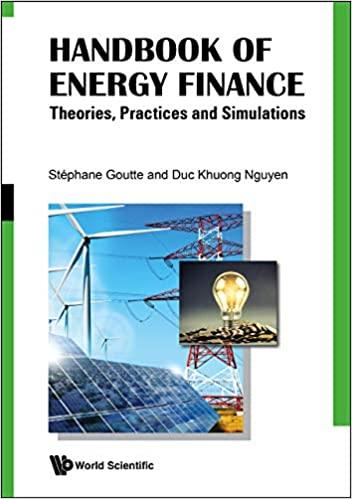Answered step by step
Verified Expert Solution
Question
1 Approved Answer
Jason and Kerri Consalvo, both in their 50's, have $50,000 to invest and plan to retire in 10 years. They are considering two investments. The

Jason and Kerri Consalvo, both in their 50's, have $50,000 to invest and plan to retire in 10 years. They are considering two investments. The first is a utility company common stock that costs $50 per share and pays dividends of $2.00 per share per year (4% dividend yield). Note that these dividends will be taxed at the same rates that apply to long-term capital gains. The Consalvos do not expect the value of this stock to increase. The other investment under consideration is a highly rated corporate bond that currently sells for $1,000 and pays annual interest at a rate of 5.0%, or $50.00 per $1,000 invested. After 10 years, these bonds will be repaid at par, or $1,000 per $1,000 invested. Assume that the Consalvos keep the income from their investments but do not reinvest it (they keep the cash in a non-interest-bearing bank account). They will, however, need to pay income taxes on their investment income. If they buy the stock, they will sell it after 10 years. If they buy the bonds, in 10 years they will get back the amount they invested. The Consalvos are in the 33% tac bracket.
Jason and Kerri Consalvo, both in their 50s, have $50,000 to invest and plan to retire in 10 years. They are considering two investments. The first is a company common stock that costs $50 per share and pays dividends of $2.00 per share per year ( 4% vidend yield). Note that these dividends will be taxed at the same as that apply to long term capital gains. The Consalvos do not expect the value of this stock to increase. The other investment under consideration is a highly rated corporate bond the currently sells for $1.000 and pay annual interest at a rate of 5.0%, or $50.00 per $1,000 invested her 10 years, these bonds will be repaid et par or $1.000 per 1.000 invested. Assume that the Consalvos keep the Income from their investments but do not reinvest in the top the cash in a non interest bearing bank court). They wil, however need to pay income as on their investment comme they buy the stock, they will sell to 10 years they buy the bonds, in 10 years they will get back the amount the invested. The Consalvor in the 30tax bracket. a. How many shares of the stock can the Consalvest b. How much will they receive after taxes each year in dividend income if they buy the stock? What is the total wound they would have from the original 180.000 they purchased the stock and all went as planned? What is the total nourt they would have from their original $50,000 they purchased the bords and all went as planned? t. Based only on your calculations and ignoring other risk factors, should they buy the stock or the bords? 2. The number of shares of the stock that the Consalves can buy isares (Round to the nearest whole number) b. If they buy the stock, the amount they will receive each year in dividend income starts is Round to the nearest cent) e. The total mount they would have from their ongira 500,000 they purchased the stock and all went as pervedia & Pound to the nearest cert) d. If they purchase the bones, the amount they will receive each year in Werther sound to the newestent) ..The tal amount they would be to their original 550.000 ey purchased the bands and l went as planned Round to the reset cert) 1. Based only on your callestore and proving other tak tuction, the Consalves thoud by 08 (elect from the drop down menu) bond Enter your answer in each of the web 3 5 2 8 9 0 E A. How many shares of the stock can the Consalvos buy? (Round to the nearest whole number)
B. How much will they receive after taxes each year in dividend income if they buy the stock? (Round to nearest cent)
C.What is the total amount they would have from their original $50,000 if they purchased the stock and all went as planned? (Round to the nearest cent)
D. How much will they receive after taxes each year in interest if they purchase the bonds? (Round tk nearest cent)
E. What is the total amount they would have from their original $50,000 if they purchased the bonds and all went as planned? (Round to the nearest cent)
F. Based only on your calculations and ignoring other risk factors, should they buy the stock or bonds?
Step by Step Solution
There are 3 Steps involved in it
Step: 1

Get Instant Access to Expert-Tailored Solutions
See step-by-step solutions with expert insights and AI powered tools for academic success
Step: 2

Step: 3

Ace Your Homework with AI
Get the answers you need in no time with our AI-driven, step-by-step assistance
Get Started


